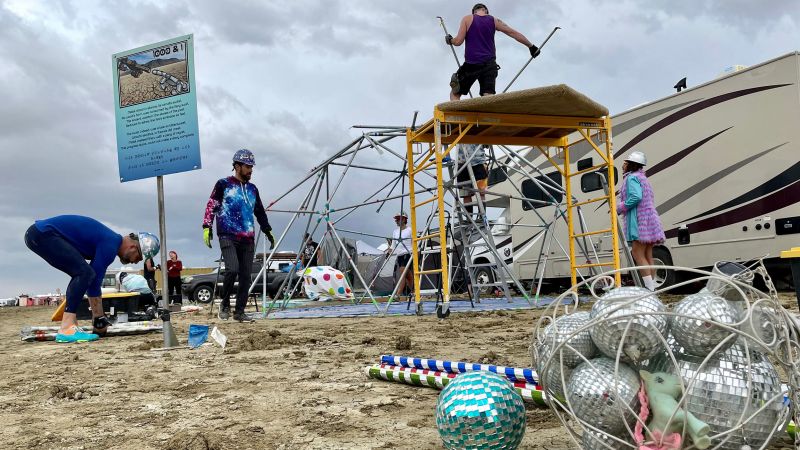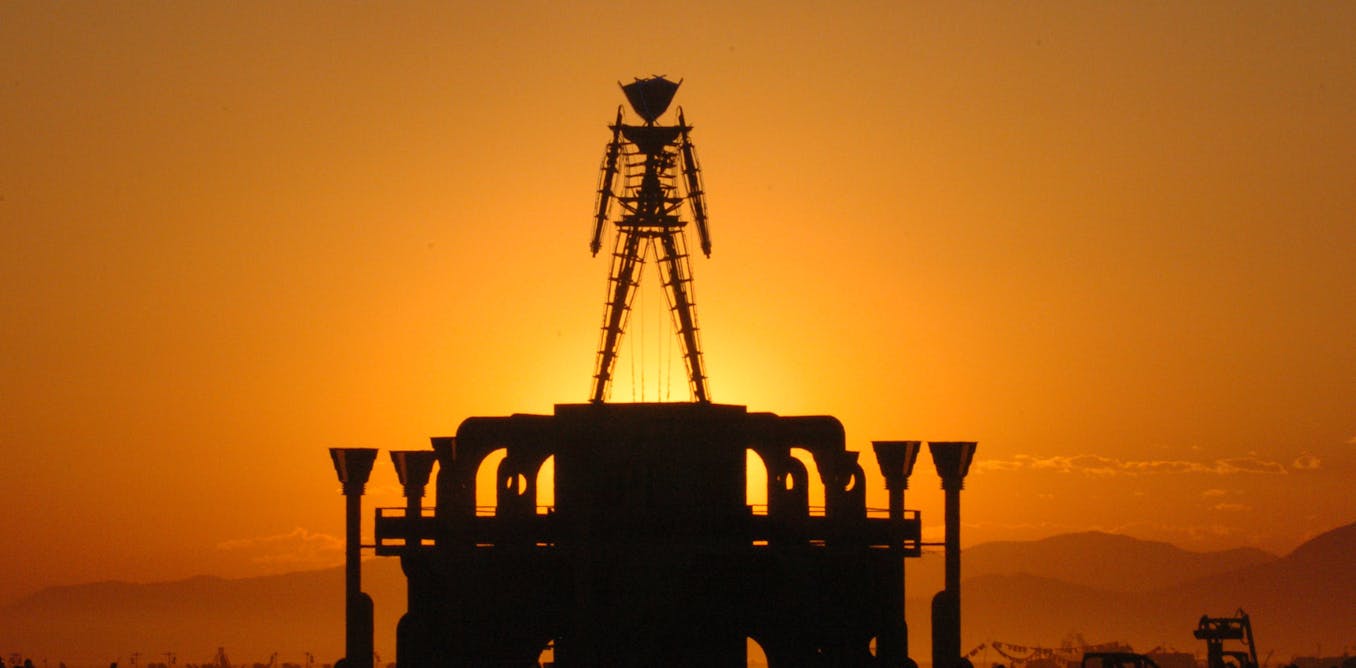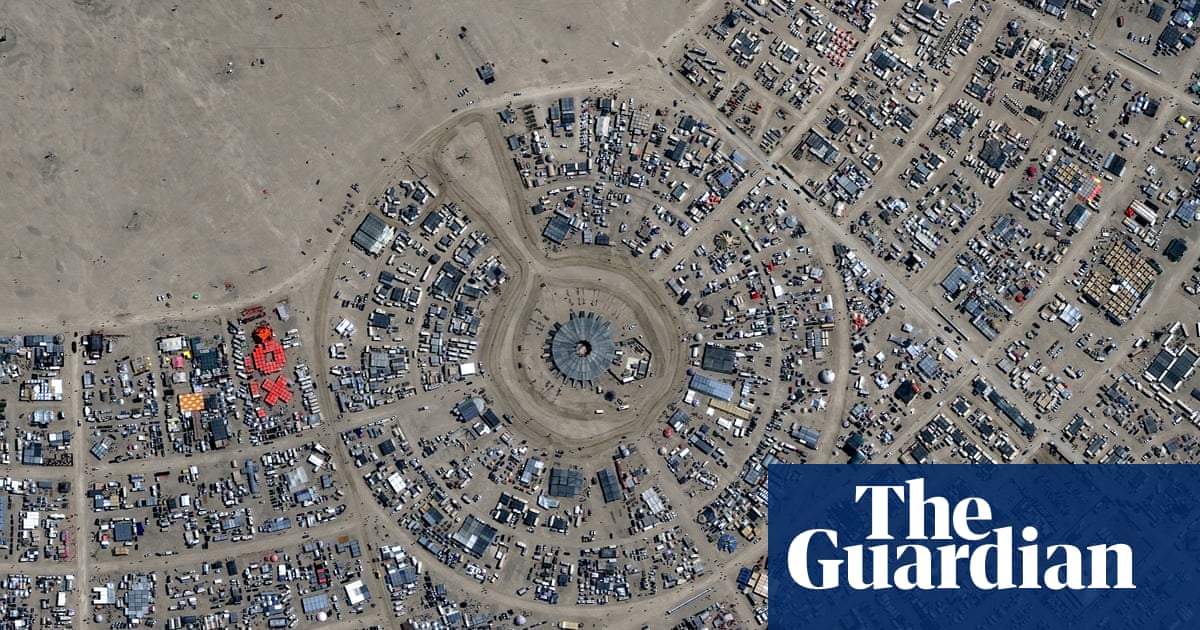- The Rembis Report and Other Fascinating Topics
- Posts
- The Rembis Report and Other Fascinating Topics - Volume CXV
The Rembis Report and Other Fascinating Topics - Volume CXV
Careful What You Wish For

Burning Man is not for me.
I have been to concerts and large gatherings before. I once attended the Macy’s Thanksgiving Day parade. That was fun. I was at Super Bowl XVI with 80,000 other people. That was fun, too. So I know what it is like to be part of a big crowd.
Large crowds do not make me anxious. I take Disneyworld in stride because I like it there. I go to the beach almost every weekend, have for years, and I expect a crowd. But in all of these places, even in New York City, I know how to find a restroom. Will they always be immaculately cared for? Of course not, but they are not port-a-potties in the desert. Most of them flush, have a sink, soap, lights, and mirrors. They are not rugged.
Of course, I can handle rugged. I have camped in the desert many times. Hiked backcountry trails and made the extra efforts to bury excrement. Not the most fun part of the wilderness experience, but it must be done.
So the trouble for me, with Burning Man, would not be the crowd itself, nor the ruggedness of the situation. It is the combination of the two. Being one of the tens of thousands of people sharing non-flushing facilities is not for me.
No thanks.
But to each, their own. Some people like lining up to party in filth and grime and revel in it. So, you go boy - or girl. Have at it. Sorry, I won’t be there, but I don’t think anyone will miss my presence, anyway.
There is no singular way to describe Burning Man. To put it in a nutshell and say “It is a wild party where almost anything goes, but everyone picks up all their trash when it is over,” is a misnomer. For devout attendees, the Burners, it is much more than that. Some might say “It bestows an essence of enlightenment, a sense of sharing the bounty of Earth while also caring for it, where every inhabitant is welcomed, included, and celebrated for who they are.”
Nobody told me that, exactly, but that seems to be the gist of it.
The Burning Man Project website says “Burning Man is not a festival! It’s a city wherein almost everything that happens is created entirely by its citizens, who are active participants in the experience.”
So the definitions are broad and open to interpretation.
It started out innocently enough. On a beach in San Francisco in the summer of 1986, there was a guy who built a big wooden statue in the shape of a human and set it on fire. His friends thought it was cool and so much fun, they decided to do it again. So they did.
They set up a wooden man and burned it every summer. The concept caught fire and lots of other folks heard about how cool it was and they started showing up so they could be there to witness the annual spectacle. A party just for the sake of a party. Because they could. Why not?
Then it got big. So many people started showing up they had to move off the beach and find someplace for thousands of people. So, the party migrated to the Nevada desert. It was far enough away from everything so that you could make all the noise you wanted without breaking any ordinances, lots of room for everybody to bring their friends, and even without any big name headlining entertainers, the Burning Man felt a little like a throwback to Woodstock, where people just showed up to have fun. What could go wrong?
After almost 20 years of people heading out to wander around and find themselves in the desert, it seemed like some rules were in order, so in the interest of keeping everything copacetic and safe, and to avoid harshing anyone’s buzz with commandments, Ten Principles were established as a guide for attendees. They are Radical Inclusion, Gifting, Decommodification, Radical Self-reliance, Radical Self-expression, Communal Effort, Civic Responsibility, Leaving No Trace, Participation, and Immediacy.
This is where defining Burning Man Project becomes tricky. It takes more than just checking out their website, reading some news, and watching videos, to fully grasp the concept. Elon Musk once said of Burning Man “If you haven’t been, you just don’t get it.”
He is probably right. But other attendees have returned from the playa without any revelatory experience and still wonder what they were doing out there in the first place. They went there and back and still don’t get it. Some never will. I am not ever planning to go, so I don’t know if I would get it or not. It is the kind of thing I might want to go see for an hour or two. Maybe if there was a nice hotel I to stay at where I would have my own clean facilities, and get a snack from a licensed vendor, that might be something I would be interested in. But that will not happen, and I am fine viewing vicariously through the internet.
What really happens at Burning Man? Lots of stuff. Lots of naked people running around. Plenty of fantastic art. Not all of it gets burned. Lots of bicycles, naked people on bicycles, and naked people on bicycles dragging art around, sometimes with naked people riding on the art being dragged by the cyclists. Like a parade, but not a parade. I like to think that sums it up, but it does not. The art is incredible and attendees are intensely involved with living in the moment.

Medusa Head at Burning Man
The event is a place to see and be seen. To let loose and be yourself, do your thing, be free. Check out these dispatches from past events.
Lots of fun in years past, but a sudden rain event dumped a couple months worth of rain in a few hours making for a muddy mess. Here is what that looked like.
Not the greatest situation, to be sure. But many hearty souls made the best of it. They sheltered in place for the safety of all, like they were told to, and only one of the 70,000 people there died. Early news reports tried to sensationalize the death, but odds are that on any given day, any population of 70,000 people is probably going to have one fatality, just because their number was up. Everybody has to go some time. If you find that unacceptable, go ahead and try hanging out with more than 70,000 people at a time to increase your chances of survival. See how that works out for you. Statistics show that the global number of deaths per day is around 150,000, and I don’t care how much you don’t like it. You will never beat the odds and the house always wins. So, adios amigos!
Big gatherings like this are not for everybody. Some attendees don’t figure that out until they get there, and then it is too late. Like when you book a room for a nice quiet time and find out that your hotel is packed with rowdy conventioneers. Not much you can do about it when they are screaming through the halls at 3 AM. Some people quit. After 30 years of stoic attendance, renown Burner and DJ Adriana Roberts announced her retirement from the party, not because she no longer finds it an incredible experience, but because she is being priced out.
Adriana Roberts isn’t the only veteran Burner to divorce herself from the project. Self-styled philosopher and fitness guru Aubrey Marcus is signing off, too, citing a shift away from the fundamentals that made it a great event. He announced that he would be skipping the 2023 event because over the past seven years, he has seen what was once a fully inclusive mindset become divisive and capitalistic.
Festivals are supposed to be celebrations of life. Burning Man fills a void for many, many people who either want to find disconnection from their daily lives, or discover a way to integrate with others on a spiritual level without the trappings of religion, even if they exercise faith in some other way. It is a psychological release valve that some people cherish. But for Adriana and Aubrey, Burning Man is not what it once was. It is morphing away from itself.
This Vice article says there are six types of people who ruin Burning Man just by being there. The notion is not just cute, it is on point. The Techno-Snobs and the One Percenters who have infiltrated Black Rock City are the ones that Adriana and Aubrey are nodding at. They show up, but they just don’t get it.
It is easy to see how Burning Man Project got to where it is. It has proliferated across the globe and now has a presence on six of the seven continents. It will not be ending any time soon.

There is a vast appeal for people to break out of their shells, venture off to the desert to sing, dance, dress up silly, enjoy art, and maybe pop pills, smoke dope, eat mushrooms, to experience something they never have, which they may never again. Recreational drug use can be a once in a lifetime event for some folks. Even though marijuana and psilocybin rules are more relaxed now than they were years ago (even though in the 1980’s we could buy MDMA in gas stations), an open and accepting atmosphere like Burning Man could be just the right place to be comfortable with it.
Or maybe they just go to watch all the naked people.
Other than the burning of the Temple and the burning of The Man, there are no scheduled performances of any kind. You just show up and get what you get. You are the performance. Be ready to see and be seen and don’t expect to get paid. No merch. No commodification. Share and share alike.
But Burning Man is attracting more well-heeled inductees than ever. Their presence, and everything needed to appeal to them, has made it more expensive year after year, which makes it tough for folks on a budget to participate in what is supposed to be a not-for-profit event.
Burning Man tickets start at $575 each and go as high as $2,750 each. Parking your vehicle starts at $150. With 70,000 attendees - do the math - this is no less than $40 million in revenue to attend an event that won’t spring for proper waste facilities. In short, sounds like a rip-off. A not-for-profit shouldn’t have money left over. However they spend the $37 million beyond the cost of the permit, I don’t know, but I would have a tough time throwing a party that big and not having enough money left for sanitation and cleanup. Somebody’s bank account got fat at the expense of the desert. I’m not saying somebody should not get paid, I am saying it should not be a non-profit. It looks pretty profitable to me.
The BLM permit costs $3 million. When a business can afford a $3 million dollar permit every year to host a ticketed event, whose major success above all other objectives is trashing the desert, it is not a non-profit venture. It is the mask of enterprise.
But, forget about the money. Look at the impact. The Leave No Trace ethos is failing.
In 2018 an old Boeing 747 that had been converted into a nightclub was left behind. They say they plan to pick up every last spec of glitter, but that is impossible. Plus, even if they pick up most of everything that was left behind, what gets packed out doesn’t necessarily make it all the way home to a Burner’s personal trash bin. They toss it out in cities along their routes home.
These may not be the “traditional” Burners who are doing this. I am sure lots of them hate trash and may actually make the effort to take all their crap all the way home. But what doesn’t make it home, makes it bad for everyone else. YouTube channel Explore With Us made this video three years ago debunking the myth that Burning Man Project was a true leave no trace event. They had seen the evidence in years prior and decided to take before and after video to prove it. Lots of trash shows up on the sides of the roads in and out of the playa right after the Burners bug out.
It isn’t just the visible trash. The entire event, hauling in all the air conditioners, running generators for nine days straight, 70,000 people farting, makes a lot of noxious gas and sends 100,000 tons of carbon dioxide into the atmosphere every year.
Burning Man Project recognizes these issues and says they are committed to becoming carbon negative by 2030. If they actually can that would be a beautiful benchmark. With the muddy fiasco that ensued at this year’s burn, everything we know about carbon emissions, trash improperly disposed of, ticket prices, and the waning of inclusiveness, the event has gotten lots of bad press. It was so bad that attending comic Sam Morril @sammorril tweeted Being trapped at Burning Man seems almost as bad as being trapped in a conversation with someone who went to Burning Man.
So, here is an idea that nobody is going to go for. If Burning Man Project really wants to set an example, have attendees park their cars and walk in 5 miles. Drag, pull, or push whatever they can carry to camp out for a week, and limit the event to some calculus that accounts for how many people make it to the parking lot to begin with, and would be willing to hoof it that far. Then those ten principles will make more sense. Maybe they actually could leave no trace.
Just kidding. There is no way to leave no trace. Scientists just proved a causal link between planet-warming pollution and polar bear survival. Even if every Burning Man Project event on the planet quit right now, the people who would have gone will still keep on using fuels in abundance, and littering someplace else. On the upside, people are still dying at a rate of 150,000 a day.
It is human nature to destroy. Look what we are doing to Mars.
Now we are creating oxygen there. What if oxygen is bad for whatever already lives there? Is that a fair deal? Not for them.
If humanity succeeds in establishing a haven for itself, if there is life on Mars, for which our presence would be deadly, we will kill it. Because, even if it means extinction, that is survival of the fittest. That is just how it is.
Thanks for reading.
If you are new to the Rembis Report and would like to read any of the previous issues, PLEASE CLICK HERE to access the archives. To read it from the beginning, PLEASE GET A COPY of The Rembis Report: An Observation.








